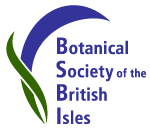How to upload specimens
From Wiki
{At the time of writing - April 2008 - parts of the public interface for specimen upload are still being completed. This document describes the interface as planned. In the meantime if you wish to try out up-loading some sheet images please contact Tom Humphrey ([email protected]).}
Contents |
Upload of images to herb@home
Using the image upload form {to be implemented} a set of sheet images can uploaded to herb@home (alternatively images can be sent on CD or DVD).
The second stage of image upload is to link image files with their unique identifier (typically sheet numbers). Herb@home software can be used to automatically read barcoded labels on sheets. Sets of sheets images can be assigned a taxon name at this stage (optional but highly recommended). This information can be provided either using a web-based interface or from an uploaded spreadsheet file.
Sets of uploaded images can have copyright information and access restrictions (open to all users or restricted) applied.
Image formats
We can directly accept JPEG and TIFF format (preferred) images. There is no artificial limit on maximum image size accepted - but if you plan to send images > 16 MPixel then check with us first.
For testing purposes please limit uploads to no more than 1GB (1000 Mbytes) of data. There is however no hard limit on the amount that may be uploaded for production use, we use Amazon S3 for external storage - so can scale up image storage to an unlimited extent.
Imaging herbarium sheets for the herb@home project
There are many possible approaches to imaging sheets - the following outlines the protocol used for recent photography at Birmingham University for herbaria@home. To some extent we have prioritized speed of image acquisition and minimizing capital cost over image quality - but we believe that the resulting images are more than sufficient for most uses.
Specimens are photographed using an SLR digital camera (8 MPixel or greater) mounted on a copy-stand. This allows for rapid imaging of specimens - an experienced worker can photograph 800-900 specimens / day.
Fluorescent daylight bulbs mounted on the stand provide lighting. White balance calibration using a standard grey card is strongly recommended. We have successfully used a Colour Confidence grey card, but there are also many other suitable versions.
The camera should be set to the highest quality setting (RAW or TIFF format rather than JPEG)
Images should include a scale bar.
Ideally, all sheets should be uniquely numbered (see below).
Herbaria in the UK wishing to send images to herb@home may be able to arrange to borrow the necessary photographic equipment from us.



